Taking up watercolour as a hobby is intimidating for beginners because they’ve heard watercolour is the hardest medium to learn.
But is this belief true?
Many watercolourists agree on several unique characteristics that make watercolour a challenging medium to paint with.
Watercolour is hard due to its unpredictable nature. Watery pigment flows wherever it wants, which makes it difficult to control. And since watercolour is translucent and appears lighter once the pigment has dried, it’s hard to fix mistakes because they show through the layers.
So, is it even possible to learn to paint with watercolours?
Keep reading to discover how to overcome the most difficult aspects of watercolour painting.
Table of Contents
Is Watercolour Hard to Learn?
Since watercolour is unpredictable and uncontrollable, it has a reputation for being unforgiving. This perception leads people to believe that watercolour is hard to learn.
Although watercolour is difficult, it’s possible to learn this skill if you have good art education and the determination to succeed. By following step-by-step tutorials, taking art classes online or in person, and practicing on a consistent basis, anyone can become a skilled watercolourist.
Achieving this goal is possible when you learn how to work around the difficult aspects of watercolour painting.
For example, if watercolour is notorious for being uncontrollable, the solution is to learn how to control water.
In other words, learn how to balance the paint-to-water ratio because different amounts of pigment and water will allow you to apply techniques more effectively.
An example would be using more water with the wet-on-wet technique to create spontaneous washes of colour.
Or using less water and a lot more paint to create texture with the dry brush technique.
Is Watercolour the Hardest Medium?
Did you know that acrylic and oil painters often struggle to learn how to paint with watercolours?
In the watercolour vs acrylic and oil debates, watercolour usually reigns as the hardest painting medium.
One of the major problems is that you can’t undo a mistake by painting over it in an attempt to hide the blunder.
Watercolour is the hardest medium to master because it can be very difficult to fix mistakes. The transparent nature of watercolour means that mistakes show through the layers. As such, you cannot easily erase or paint over the errors in the same way that you would with opaque mediums such as acrylic or oil.
So, how do you fix watercolour mistakes?”
The best solution is to learn the fundamental watercolour techniques so that you understand how to apply the paint properly.
Doing so will reduce the likeliness that you’ll apply the pigment incorrectly and make mistakes.
So when you study the techniques in detail, you’ll understand how to avoid creating streaky brushstrokes and accidental blooms that look like little cauliflowers.
As well, you’ll learn that laying down watercolour requires a very different approach than acrylic or oil paint.
Related: Check out this popular article to learn how to apply fundamental watercolour techniques that every painter needs to master.
How Do You Leave White Spaces in Watercolour?
Traditionally, the white of the paper is preserved in order to create highlights and deepen the contrast in a painting.
For this reason, many watercolourists do not use white paint and prefer to use the white of the paper.
In watercolour, white spaces can be preserved by using masking fluid to prevent pigment from seeping into that section of the paper. In addition, the lifting technique can be applied to lift watery pigment off the paper by using a damp, clean brush.
However, if you’re not careful about keeping the white of the paper clean, you can accidentally lose it while you’re painting.
This is why you need to plan ahead before you start painting so that you know exactly which areas of your painting need the whiteness to be preserved.
So, another reason why watercolour is hard is because you must learn how to reserve the white paper without dirtying it.
Check out the YouTube video below to learn how to preserve the white of the paper in a watercolour galaxy painting.
What Paper is Best for Watercolour?
Anyone who has painted with watercolours for a while will tell you that the biggest hindrance to progressing in watercolour is painting on cheap, low-quality paper.
The best watercolour paper is made of 100% cotton. This type of paper is high-quality because it is thick and super absorbent, meaning it can handle many washes and layers of paint without warping or buckling. 100% cotton cold-pressed paper is the most well-rounded paper for watercolourists.
You see, 100% cotton paper is more absorbent than cheap watercolour paper which is made of cellulose or wood pulp.
Cellulose and wood pulp paper can’t handle much water or many washes because the paper is too thin. So, it’s more prone to buckling, warping, or tearing.
This is why experienced watercolourists advise beginners to invest in watercolour paper more than any other art supply, including paints and brushes.
Related: Consult this list of recommended watercolour art supplies to find the best quality paper.
How Do You Mix Vibrant Colours in Watercolour?
I’ll be the first person to admit that I had no clue how to mix pigments when I was a beginner. As a result, my paintings often looked dull or muddy.
Not knowing how to mix colours prevents beginners from progressing because they often produce lifeless, muddy colours.
So, the best solution is to know how to avoid muddy colours by learning about the individual properties of your paints.
For example, study each paint’s pigments. You can find this information with the set of paint that you bought, including:
- The paint’s pigment properties
- Lightfastness rating
- Opacity/translucency
- Staining rating
- Granulation
Refer to the chart below to see the colour swatch I made for my White Nights paints. The chart contains each paint’s pigment properties at the bottom of each square.
Identify which paints use fewer pigments. Those paints are likelier to mix better. Paints made of too many pigments often clash and contaminate one another, thus producing dull and lifeless mixes.
In addition, understanding colour theory basics will help you understand which colours work best with one another.
For more information about learning how to mix colours correctly, I highly recommend that you check out this article about colour theory basics for watercolourists.
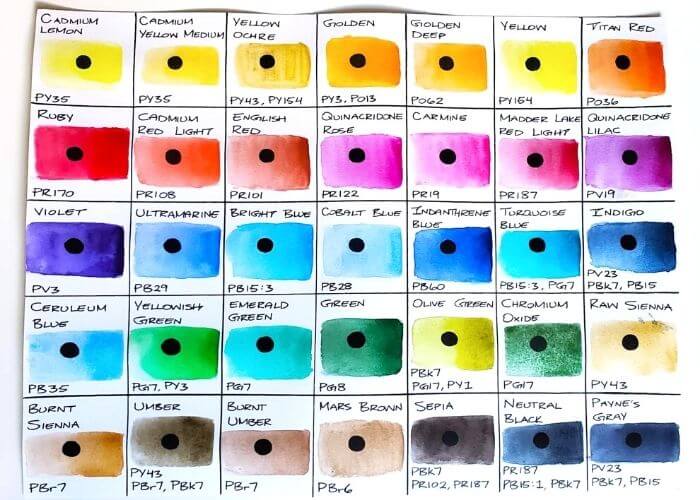
How Long Does It Take to Get Good at Watercolour?
It takes time and dedication to learn any new skill. Watercolour is no exception.
Although everyone is different, there are a few general guidelines that will help you progress faster.
You can get better at watercolour by practicing for 15 to 30 minutes several times a week because repetition is the key to success. The more consistently you practice painting, the faster you’ll develop your painting skills and become a successful watercolourist.
If you really want to improve, you need to make time for watercolour art by scheduling it into your calendar.
Then make it a routine and practice several times every week. And make it a non-negotiable so that you always prioritize time for art.
When all is said and done, the time it will take for you to succeed at watercolour painting will directly correlate to the amount of time and effort you invest into mastering this craft.
Now that you know what to do, it’s time for you to get out there and make it happen!
Conclusion
In this article, you’ve learned about the most common obstacles and setbacks about watercolour painting.
By now, you should have a good understanding about why watercolour is hard but not impossible to learn.
With the right supplies, attitude, and instruction, you can become a successful watercolourist.
If you’re serious about developing this artistic skill, you’ll make time for it and practice on a regular basis.
So, I recommend that you start improving your watercolour education by checking out these easy step-by-step watercolour tutorials because they’re beginner-friendly.
They’ll help you learn the fundamentals and build confidence in your painting skills, so have a look at them right now.
Good luck with your paintings!
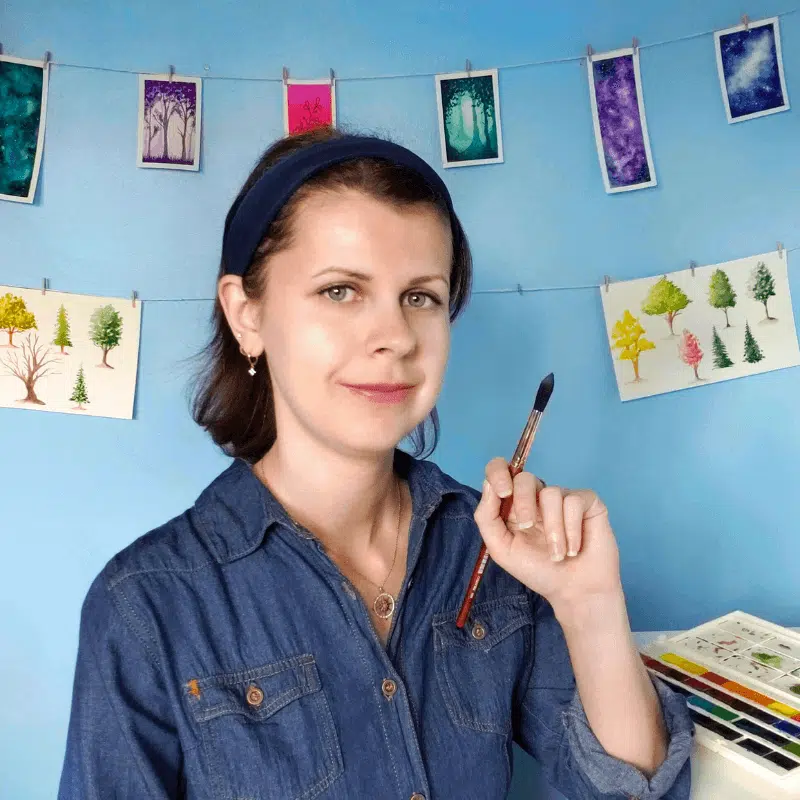
Miranda Balogh
Artist & Online Educator

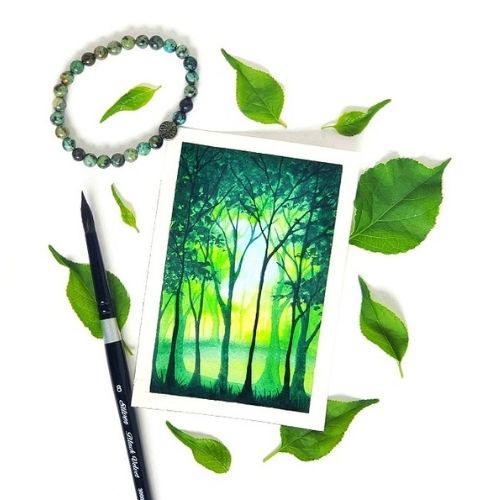
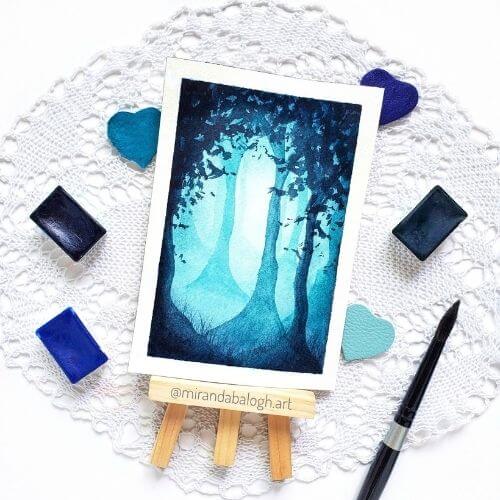
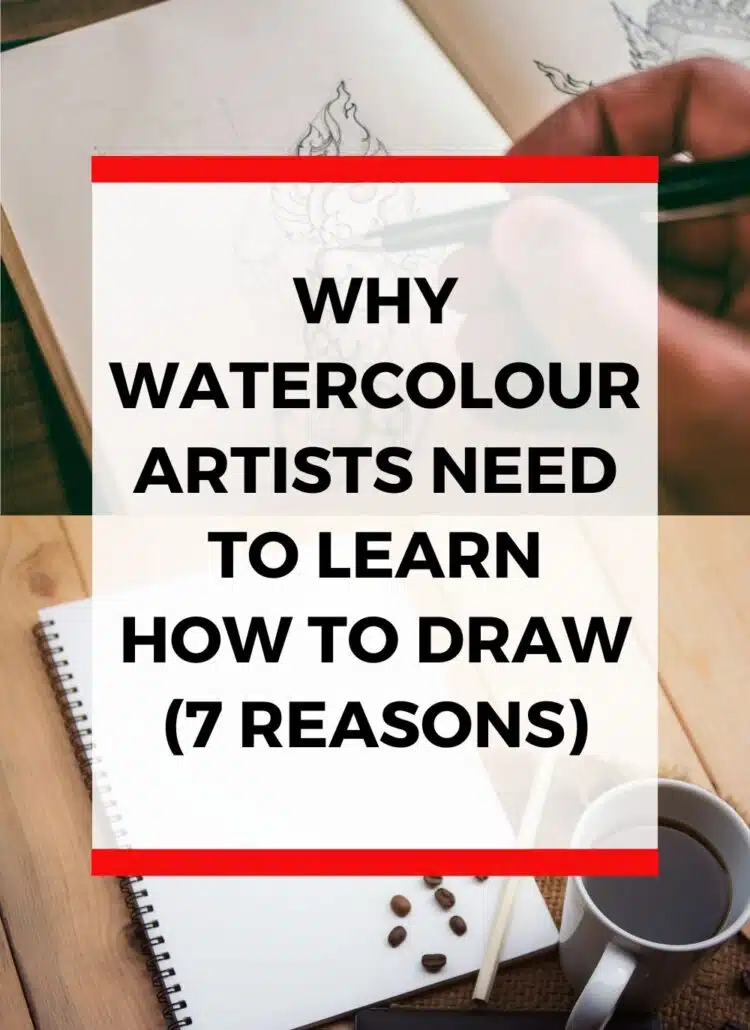
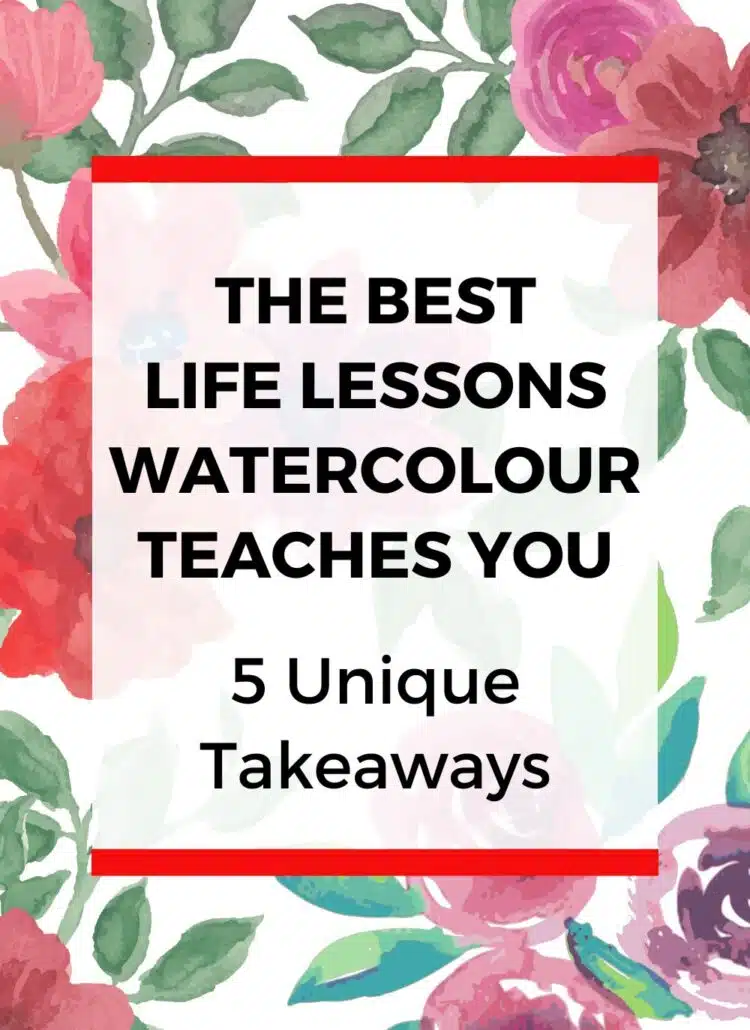

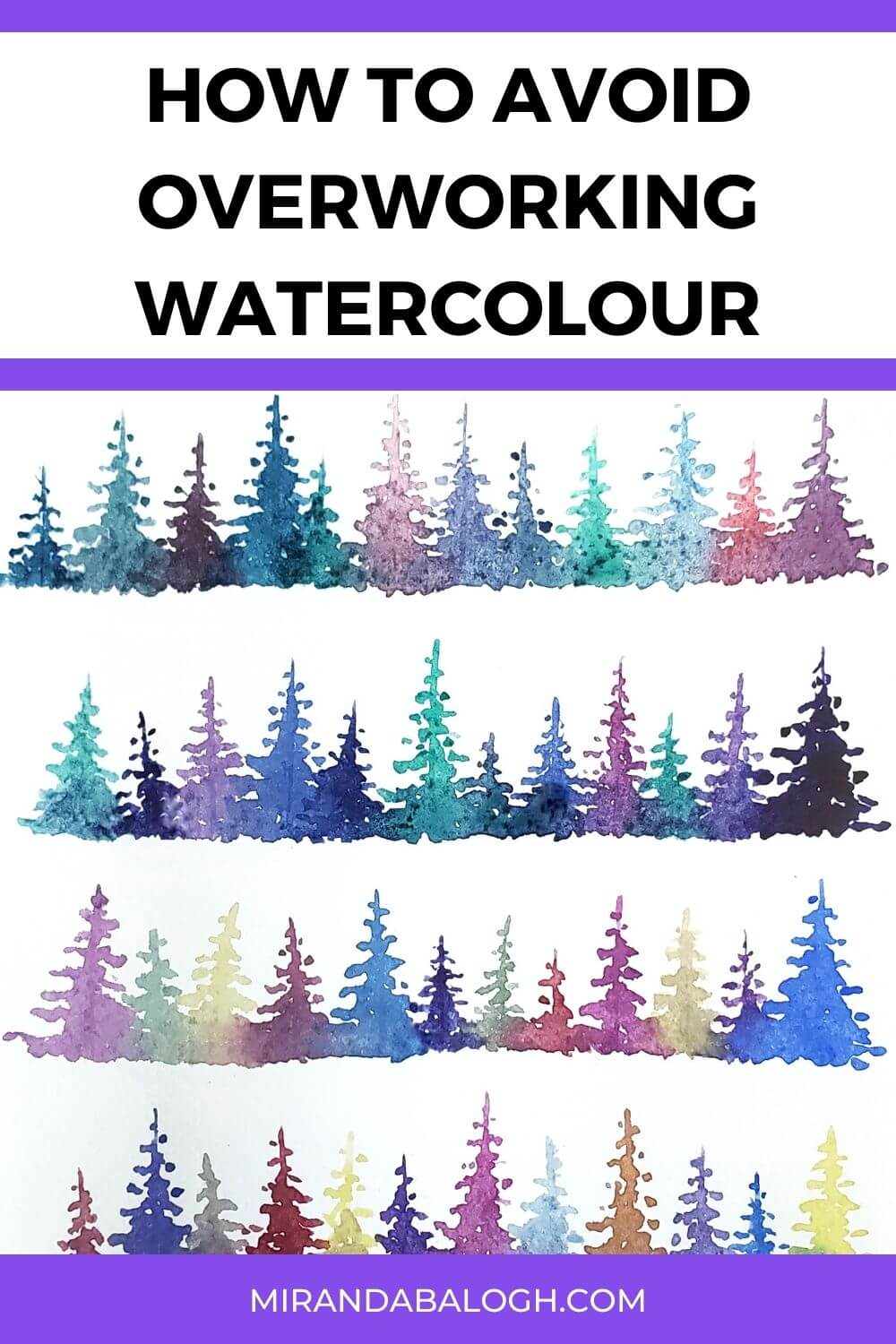
Great article! I agreed that we could become great artists with the right supplies, instruction, and practice. Thanks for sharing.
Thank you, much appreciated! It’s nice to know that a fellow artist shares these values.
This article is perfect! Very explanatory. I always overdamped my paper and now realize it wasn’t me, it was the paper. I definitely have to try 100 percent cotton paper. I learned a lot, great sharing!
I’m glad to help! Switching to 100% cotton watercolour paper is going to make your painting experience so much easier and smoother, so I highly recommend it.
What a fun and very informative post. I love to enjoy painting and these tips are very helpful. Thank you for sharing. ☺️
Pastor Natalie
You’re welcome!
Watercolor is so pretty, but is so daunting. Thanks for giving me the confidence to try it again!
Watercolour is challenging. But once you overcome the early struggles, it’s such a wonderful skill and hobby to pursue!
I love the look of water colour but I definitely have always been terrified of trying it. After the tips and tricks you’ve explained here, I may just finally cave in and give it a try!
I encourage you to give it a try! You might be surprised by how much you enjoy watercolour.
Useful post! Watercolour can definitely be unforgiving, mistakes are much easier to correct in acrylics or oils.
You are correct! That’s why it’s important to learn how to fix watercolour mistakes so you can turn those errors into advantages.
Hi, thanks for the information. It is really helpful. Just reading your articles already gave me a clearer understanding to some areas I need to look into. Appreciate it!
You’re welcome! I’m glad you’re having fun learning.